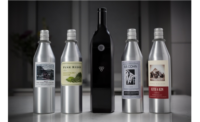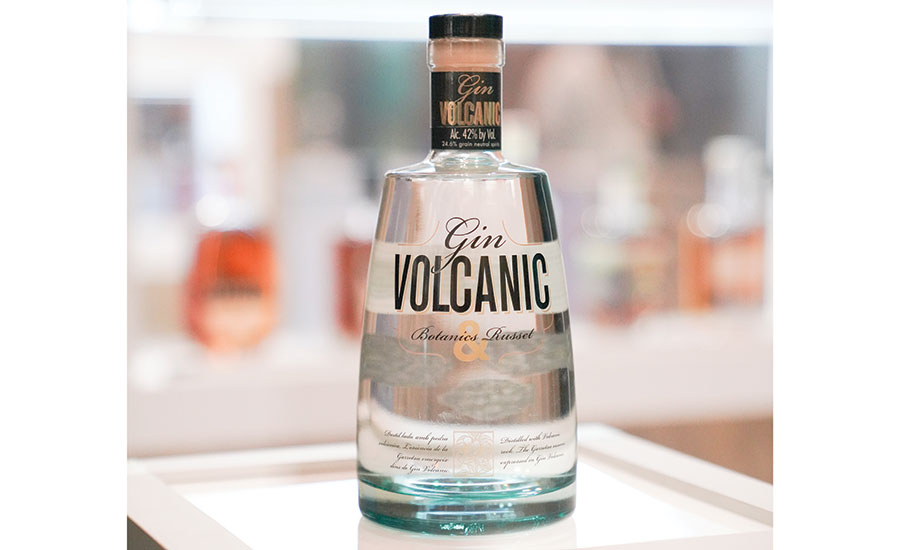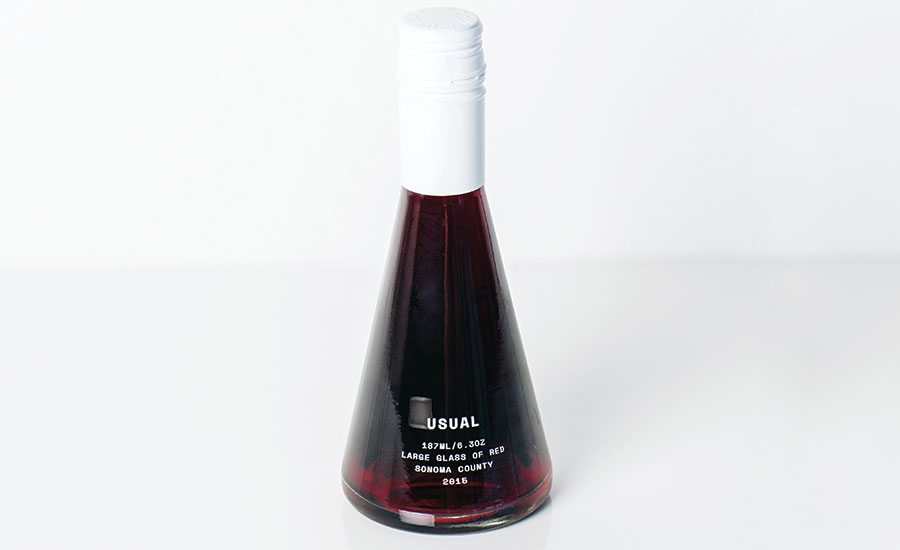Market Trends
Fresh Fruits & Fragrances Outline New Wine & Spirits
Consumer-driven trends and packaging innovations are driving the ever-changing wine and spirits market.






Wine has found its niche in the aluminum can — and with it, refreshing flavors and packaging design. Winesellers Ltd., a family owned, global importer and marketer of fine wines, just launched Santa Julia Organic Rosé, Organic Chardonnay & Tintillo Malbec Red Blend in 375 ml cans. Santa Julia is one of the largest certified organic wine producers in Argentina. The convenient, sustainable and easy-to-transport alternative to glass bottles provides the next progression for Santa Julia to appeal to modern wine drinkers.
“Today’s wine consumer is adventurous, always in search of the next unique find and trend,” says Adam Sager, Winesellers Ltd. vice president. “Canned wines offer the perfect accompaniment to summertime activities from grilling to boating to picnicking for the 2019 season.”
The Chardonnay and Rosé are certified organic, while the Tintillo is a carbonic maceration red blend meant to be chilled.
Breaking the Glass Ceiling
Dan Abramowicz, executive vice president, Technology and Regulatory Affairs at Crown Holdings Inc. (crown
cork.com) says that metal packaging can foster valuable connections between beer, wine and spirits brands and consumers. Metal’s environmental credentials and its chameleon-like product attributes make it well-suited to communicate a brand’s story and values at a glance.
“Beyond imagery and touch, beverage cans provide a 360-degree billboard for a product and increase opportunities for customer engagement. The consumer can see or hold the beverage from any angle and follow the imagery that wraps around the can.
“For wine and spirits, often gifted or enjoyed in celebration, metal packaging can add a touch of luxury. By creating a decorative metal tin to encase a bottle of champagne, fine whiskey or other spirit, brands can elevate their presentation and evoke a sense of sophistication and premiumization to accompany the sipping experience.”
Advancements in shaping capabilities also allow cans to reach other senses, with embossing techniques providing varied depths that enhance the tactile quality of the product. This dimension is often used to emphasize iconic brand imagery, logos and seals.
The unusual minimalist style of Usual Wines is what makes it unique in the market. Usual Wines has developed a new phase in wine bottle evolution by creating a sleek and beautifully designed bottle that serves the equivalent of a 6.3-oz. single glass of wine.
The new wine brand has adapted the wine glass to make it more appealing to new consumers and their needs. With high-quality glass bottles in a modern proprietary design, Usual offers consumers 6, 12 or 24 bottles of their red or rosé blends, or a mix of both. This new take on the wine glass as a single-serve option elevates the traditional way of drinking wine.
Premium Glass Packaging
Régis Maillet, group marketing director at SaverGlass (saverglass.com), believes that there is a significant opportunity in the premiumization segment in North America for wine and spirits. From design to logistics, structural qualities to aesthetics, distillers and producers have a wide variety of glass packaging features to choose from. Maillet shares these trends:
- Personalization: In the crowded market, shelf space is the key to maximizing sales, and brands are now investing in personalized stock molds or even fully custom bottles. Glass color (extra white flint glass to antique), brilliance, glass skin and side seams are all important attributes of a premium glass bottle.
- Decoration & Custom Design: Manufacturers are collaborating with distillers’ designers to ensure that unique branding elements are incorporated into custom glass bottles. Spirit brands are embracing decoration by using processes like organic screen printing, coating, acid-etching, metallization and sandblasting.
- Weight & Shape: Glass is a living material that undergoes no alteration in its physicochemical performance, which ensures product integrity and preserves flavor exactly as intended. Manufacturers can find innovative shapes and exceptional colors to customize a bottle. Brands are choosing intricate shapes to even customizing the thickness of glass bases.
- Sustainability: The desire for sustainable packaging is a high value for consumers, and glass is the only packaging material that is 100 percent recyclable endlessly without loss in quality and purity. Therefore, one recycled bottle results in the production of one new bottle without losing quality.
|
Global View with Local Flare By Katie Hughes | strategist, Vault49 brand design agencyMore and more global beer and spirits brands are launching region-specific limited editions in a bid to reach new consumers and reengage with lapsed ones. For example, to reassert relevance in Latin American countries, we’re seeing limited-edition packs and flavor lines — inspired by local foods, trends and attitudes — being rolled out. Smirnoff Ice recently launched limited edition designs in Brazil and Costa Rica to tap into the growing street-party culture. The bright, colorful designs take inspiration from famous musicians and popular music genres and position Smirnoff Ice as a catalyst for good times.

It can be a juggling act to balance the global core identity with local variants — but it’s a viable strategy and one that more brands are using. Other noticeable trends in the beer and spirits space around the world include the following four. 1. Cannabis EverythingThe “green rush” has hit North America, and as more states recreationalize cannabis use, we will see an uptake in alcohol producers infusing it into spirits and beers. Humboldt Distillery, makers of organic vodka and spiced rum and brandy, created a limited-release premium small-batch vodka infused with legal U.S. grown hemp. It’s still in its infant stages, and the science around it is still hazy, but this trend is one to watch. 2. “Low and No” ABV MillennialsAcross the world, the market for low and non-alcoholic beer is booming. Driving the shift are health-conscious consumers, particularly younger drinkers, who are looking to enjoy the hoppy flavor profile of beer without the high-calorie count. Heineken’s 0.0, while Carlsberg is aiming to double sales of its non-alcohol variants by 2022. Interestingly, blue and black are becoming the semiotic codes for “non-alcohol,” as we see Budweiser’s Prohibition Brew and Heineken’s 0.0 signaling the non-alcohol profile through color. Non-alcohol is well-trodden turf in spirits, and as we look to the future, cider and wine will be next to innovate. 3. Sustainability Is Table StakesBy reducing and reusing waste materials, beer producers are proving to be ahead of the eco curve. However, extreme weather conditions such as droughts and flooding will result in wheat and barley shortages for beer production. Cereal giant Kellogg’s is teaming up with U.K. brewery Seven Bro7hers to create a beer made with rejected cornflakes. Their Throw Away IPA recipe uses 130 lbs. of the leftover cereal to create a 5 percent ABV craft beer that will be sold in cans and on draft. We see brands joining forces and working together to stem the flow of waste. 4. Unique FlavorsBolder, more experimental flavors are growing options in the beer and spirits categories. Innovative brands are pushing boundaries to redefine each category through taste-driven drinks. Consumers are more focused on discovery, and pursue and experiment with unusual , unexpected flavors and mouthfeels. For instance, Gordon’s pink gin, which has intersected with the wider “Drinkstagrammer” (home cocktail enthusiasts who post their creations on Instagram) trend kicked off by Aperol Spritz. This is a ripe area for innovation, and it ties in to leveraging local flavors to drive relevance in markets. |
Looking for a reprint of this article?
From high-res PDFs to custom plaques, order your copy today!











